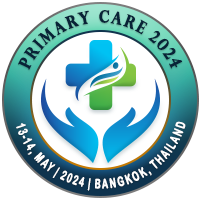
Farina Gul
University of Adelaide , AustraliaTitle: Integration Process of Family Planning Services with Other Reproductive Health Services in Low and Middle-Income Countries: A Scoping Review
Abstract
Providing fragmented family planning services is among the major causes of high unmet needs and unintended pregnancies in low-resource settings. When women miss out on family planning services during their visit to the clinic for other reproductive health services, it negatively impacts family planning indicators. Integrating family planning services with existing reproductive health services can improve accessibility. This scoping review maps the process of integrating family planning services with other reproductive health services in low and middle-income countries. We used Arksey & O’Malley’s framework to identify the integration process. The review found 36 studies from low and middle-income countries that integrated family planning services with HIV/AIDS, antenatal, postnatal care, post-abortion, postpartum care, and immunisation services. Integrating family planning services with other health services depends on the types of services. Dual methods are promoted with HIV/AIDS services, long-acting reversible contraceptive methods with postpartum and post-abortion care, and only information on contraception is provided with the immunisation services.
The integration process relies heavily on providers' training, which includes counselling, referrals, and services provision. Peer educators and counsellors from HIV/AIDS care were trained for counselling; vaccinators from immunisation services were trained for screening and assessing pregnancy risks among mothers; and doctors and nurses from post-abortion or postpartum care were trained for insertion of intrauterine devices or implants. The referral mechanism consists of co-location, where the service is provided in a different unit at the same facility and location in the same unit. Few studies discussed the approaches to contact clients for family planning. Approaches include waiting room contact at HIV/AIDS clinics, group education sessions during immunisations, and contacting women during postnatal and postpartum care. Novel approaches identified in the studies include the Happy Client Model, private counselling units, and unique promoting strategies. Several factors enabled the integration process, such as saving women’s travelling time, empowering women, improving decision-making skills, and reducing provider biases. The discussed barriers included increased provider workload, insufficient training, longer waiting times at facilities, and contraception stock-out.
Biography
Farina Gul is a PhD candidate at the University of Adelaide, Australia. She obtained her first Masters degree in health policy and management from Aga Khan University, Karachi, Pakistan, in 2007, and another Masters degree in applied health economics from the University of South Wales, UK, in 2022. Farina has extensive research experience in sexual and reproductive health,health system research, reproductive rights, and family planning.

